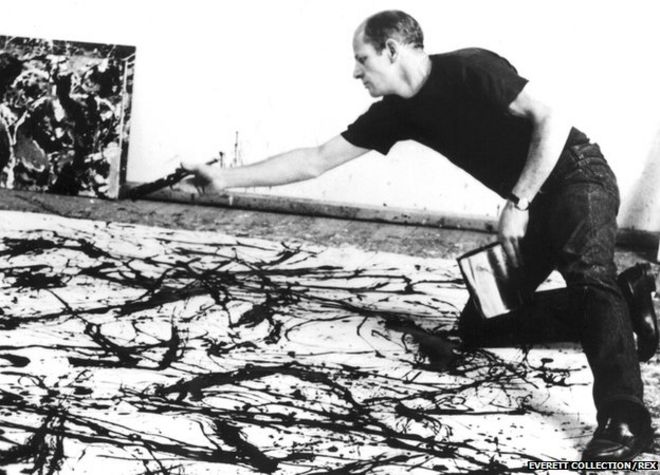https://www.youtube.com/watch?v=lfwUxQrDGqw- This Video presents Jackson Pollock creating an "Action Piece" painting.
 |
| Jackson Pollock in action
|
 |
| Pollock's work |
On Thursday 23rd of February we completed an “Action Painting” workshop inspired by the works of Jackson Pollock. To start the task we collected a variety of paints and materials to create a Jackson Pollock “Action Painting” style piece. Once the collected the materials I needed, I started to set up the environment for where the action piece was going to be create. In order to film and document my action-painting a clear piece of Perspex was used so that the camera could be place underneath to capture the paint being placed onto the surface. By placing the camera underneath the Perspex it gave a special effect as the video appears to be covered in paint. Also, by filming the development of the action-painting, it relates to Jackson Pollock’s work because he built up his pieces with layers of paint and tools. I decided to use primary colours to create my action painting piece because they are bold colours that are eye-catching and relate to Jackson Pollock’s work as he used the same colours for his work. I also used primary colours because they would stand out on the Perspex when the filming it. To build up the piece I created, I used different techniques to place the paint onto paper which gave a unique effect like Jackson Pollock’s work. Once I completed the action-painting the final outcome was presented on the Perspex.

No comments:
Post a Comment